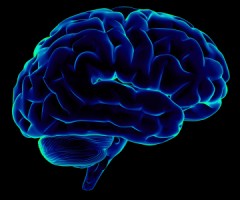Article taken from:
American Thoracic Society. (2012, May 21). “Children With OSA Require Treatment To Reverse Brain Abnormalities.” Medical News Today. Retrieved from
http://www.medicalnewstoday.com/releases/245616.php.
Treatment of obstructive sleep apnea (OSA) in children normalizes disturbances in the neuronal network responsible for attention and executive function, according to a new study.
“OSA is known to be associated with deficits in attention, cognition, and executive function,” said lead author Ann Halbower, MD, Associate Professor at the Children’s Hospital Sleep Center and University of Colorado Denver. “Our study is the first to show that treatment of OSA in children can reverse neuronal brain injury, correlated with improvements in attention and verbal memory in these patients.”
The results will be presented at the ATS 2012 International Conference in San Francisco.
In the study, children (ages 8-11) with moderate-severe OSA were compared to healthy controls. Brain imaging with magnetic resonance spectroscopy imaging was performed at baseline in 15 OSA patients and seven controls, along with neuropsychological testing. OSA treatment consisted of adenotonsillectomy followed by monitored continuous positive airway pressure (CPAP) or nasal treatments. Brain imaging and neuropsychological testing was performed again in 11 OSA patients and the seven controls six months after treatment.
Compared with controls at baseline, children with OSA exhibited significantly decreased N-acetyl aspartate to choline ratios (NAA/Cho) in the left hippocampus and left frontal cortex, along with significant decreases in the executive functions of verbal memory, and attention. Following treatment, both left and right frontal cortex neuronal metabolites normalized, and hippocampal metabolites improved with a medium effect size (0.5).
More complete reversal of hippocampal abnormalities was seen in children with milder OSA when apnea-hypopnea index (AHI) improved (although this is very preliminary data). Verbal memory and attention improved with medium to large effect sizes. Improvements in attention and verbal memory were correlated with normalization of NAA/Cho in the right and left frontal cortex (p=0.5).
“We have demonstrated for the first time that treatment of OSA in children normalizes brain metabolites in portions of the neuronal network responsible for attention and executive function,” concluded Dr. Halbower. “We speculate that if OSA is treated earlier, there may be a more brisk improvement in the hippocampus, a relay station for executive function, learning, and memory.”
“Our results point to the importance of early diagnosis and treatment of OSA in children, as it could potentially have profound effects on their development.”






